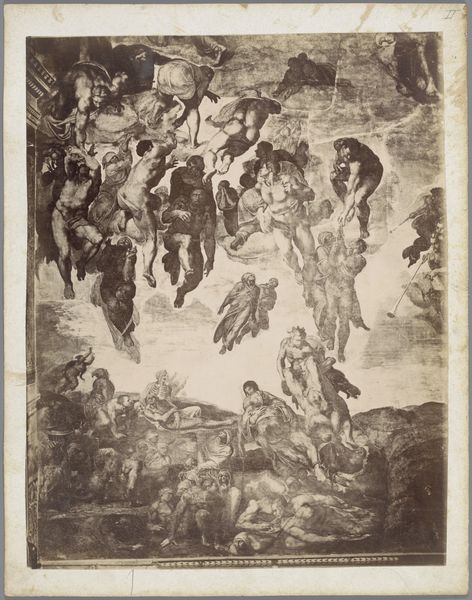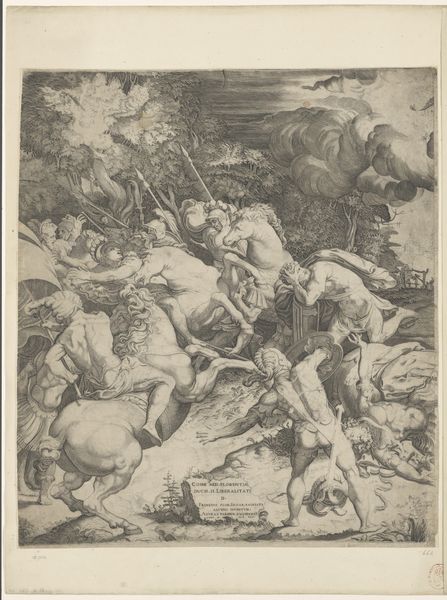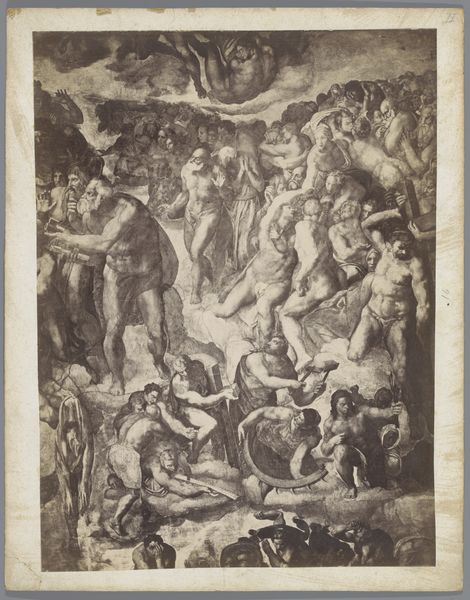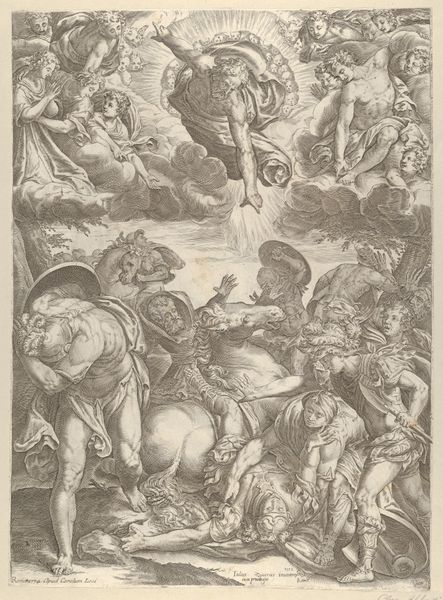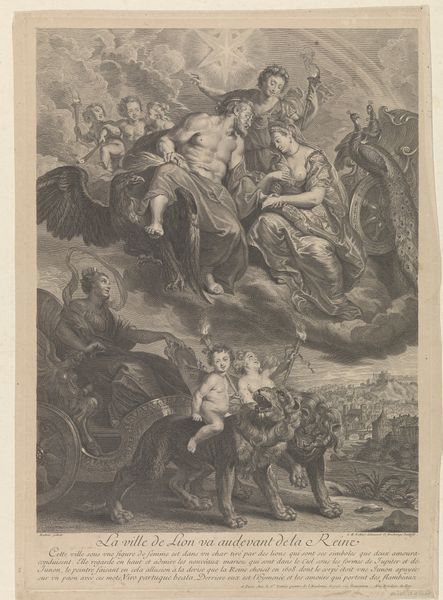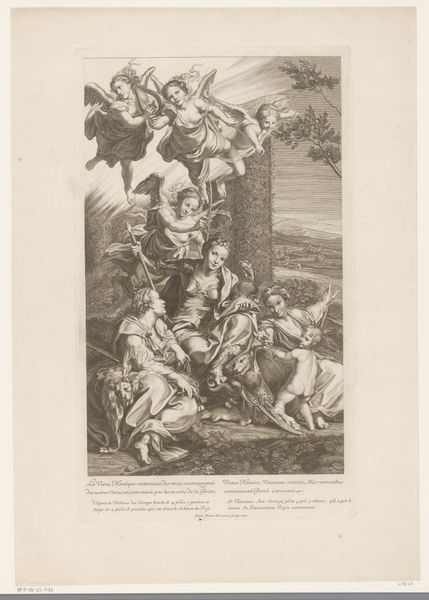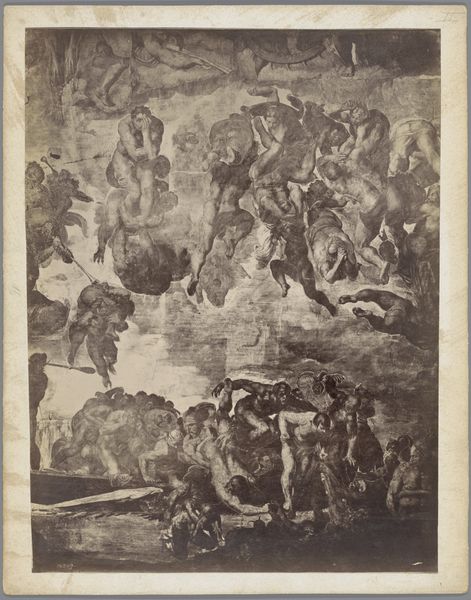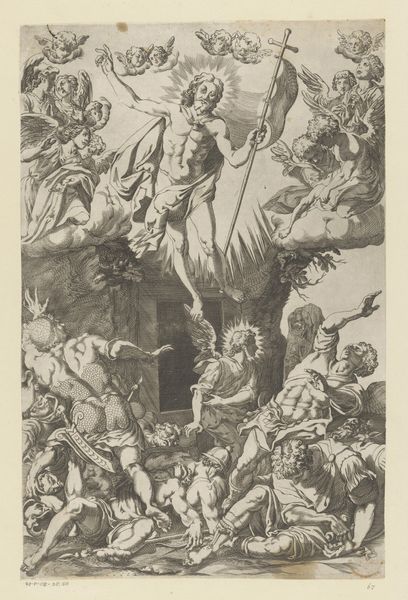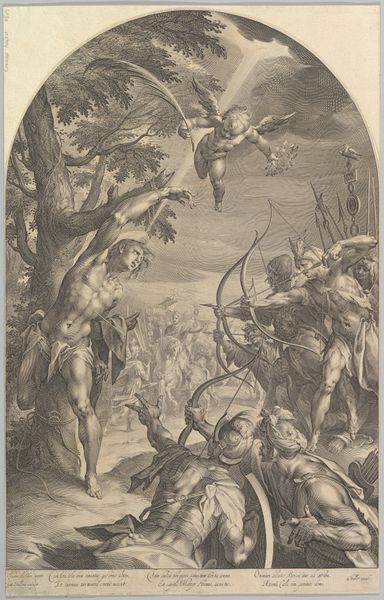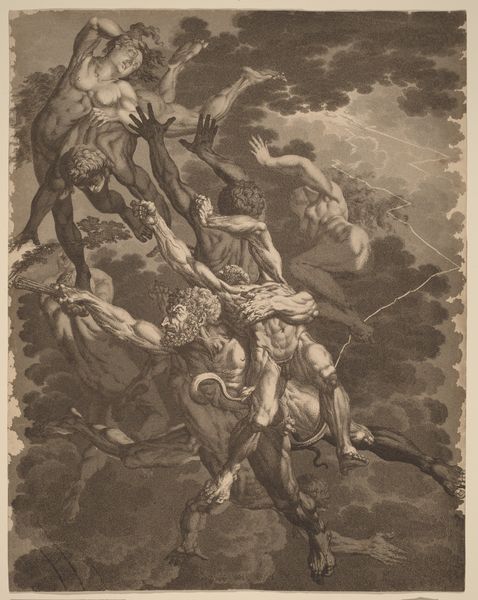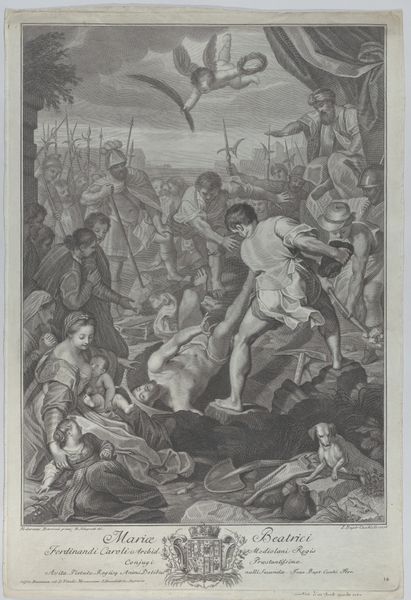
Fotoreproductie van een deel van de fresco's op de muur van de Sixtijnse Kapel te Vaticaanstad door Michelangelo, voorstellende het opnemen van de gelukzaligen in de hemel c. 1875 - 1900
0:00
0:00
anonymous
Rijksmuseum
print, photography, photomontage
#
allegory
# print
#
charcoal drawing
#
figuration
#
11_renaissance
#
photography
#
photomontage
#
history-painting
#
academic-art
Dimensions: height 412 mm, width 318 mm
Copyright: Rijks Museum: Open Domain
Editor: Here we have a photographic reproduction, dating from around 1875 to 1900, of Michelangelo’s fresco of the Last Judgement in the Sistine Chapel. The figures, rendered in shades of grey, give a somber, weighty feel. It's fascinating to see the layers of history represented, from the original Renaissance fresco to this later photographic interpretation. What stands out to you? Curator: What I find striking is how even in reproduction, certain symbolic gestures persist in holding cultural power. Take, for instance, the raised arms of the blessed, a motif stretching back to early Christian art, echoing the orant figures in the catacombs. The act of supplication, of reaching towards the divine—how do you think photography, as a medium, affects that symbolism? Editor: That's a great point, how the photographic medium affects the symbolism! Perhaps photography's supposed objectivity lends a different weight to the scene than paint. Do you mean how those repeated gestures function like cultural echoes? Curator: Precisely! Think about the damned, their bodies twisted, faces contorted, mirroring the agonies found in countless depictions of hell. These visual cues create a lineage, linking Michelangelo to earlier and later artists, even when viewed through this photographic lens. What continuities do you observe between the Renaissance understanding of salvation and the way we interpret these images today? Editor: That really brings home how deeply embedded these symbols are in our cultural psyche, how the pose or arrangement of figures carries meaning across centuries. Thinking about salvation in those terms is insightful. Curator: Indeed, and the layering of media--fresco to photography--only adds depth to the palimpsest. It’s a continuous conversation with the past. Editor: I now see how this image is so much more than a reproduction; it’s an active dialogue with centuries of belief and artistic expression.
Comments
No comments
Be the first to comment and join the conversation on the ultimate creative platform.
